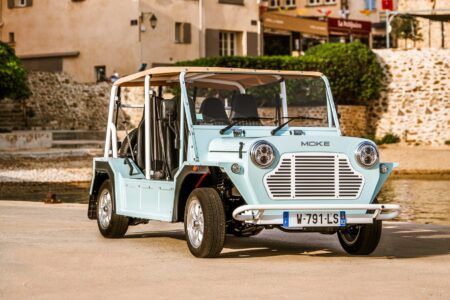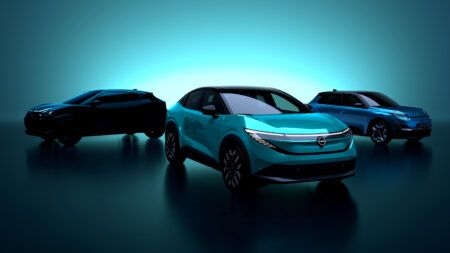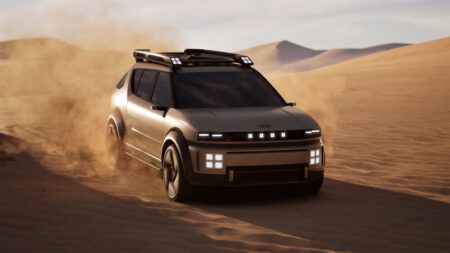When it comes to fleets, some countries are further along the road of transitioning to electric vehicles than others, but core challenges remain for all markets.
Despite the continued enthusiasm and investment in electric vehicles by automotive manufacturers, there are a certain sections of drivers in different markets around the world who are resistant to change. The thought of stepping out of an ICE-powered vehicle – or even a hybrid – is challenging to them for reasons such as range anxiety, running costs, or even emotional pulls such as the sounds of an engine.
However, the electric age is clearly gathering pace in Europe, China, and North America, with other regions looking on with a lot of interest. Fleets – in Europe particularly – are a reliable source when it comes to EV adoption. The take-up of battery powered cars is especially positive in the UK, where tax incentives encourage company car drivers to choose an EV over a more expensive ICE vehicle. In mainland Europe, the EU is being urged to mandate a target for fleets to be 100% electric by 2030 but, as of 2023, only 14% of company cars were registered as fully electric on the continent. In the UK, more than a third (34%) of company cars registered last year were fully electric.
“UK car fleets are the driving force behind electrification in the country, with over 70% of new battery electric vehicles hitting the road at the end of 2023 being purchased by companies,” says Ben Thompson, managing director, EV and energy, Radius. “Generous rates of Benefit in Kind (BIK) continue to incentivize businesses and company car drivers to make the switch, and this is forecast to continue over the coming years.”
But even despite these incentives, there are still businesses in the UK that require more to follow suit and convert to green fleets, says Thompson. “The transition in electric vans has been much slower and will continue to need government support,” he reveals. “This could be increased funding, or greater education around the benefits of maximizing EV efficiencies. Range anxiety and higher cost public charging networks are holding some fleet managers back from making the switch. But the power is in businesses’ hands to improve their access to charging networks. We are seeing more and more embracing on-site charging points at business premises. Others are widening access to EVs for their employees and installing chargers at their homes.”
These solutions result in more accessible charging, therefore leading to less of a change from diesel or petrol vehicles. At the same time, businesses benefit from keeping charging costs lower than with public charging and anxiety over where vehicles would be parked.
“All businesses, regardless of their size, can futureproof their fleets by embracing EVs now,” reasons Thompson. “It will help them on their journey to Net Zero and to stay ahead of their competitors in the long term too.”
Energy evaluations
Another company at the forefront of helping fleet vehicles of all shapes and sizes transition to battery power is VEV, whose parent company Vitol (VEV stands for Vitol EV) is the world’s largest independent energy trader.
“Vitol has already invested in a sister company to VEV, called VGM mobility, based in Bogota, Colombia. Bogota, which is involved in the electrification of buses (Bogota is the world’s largest market for electric buses outside of China),” explains Mike Nakrani, CEO at VEV. “However, VEV’s remit is to essentially help the decarbonization of fleets – light commercial vehicles, buses, and trucks. We work with them to find out what their requirements are and then build a roadmap from (typically) diesel to EV. We see it as our job to find and implement turnkey solutions to help them electrify.”
Nakrani explains the process using the example of a typical fleet of 1,000 vehicles that are traditionally diesel and leased over four or five years. “There’s a certain amount of CO2 that comes from those vehicles and operators and drivers have a fuel card, an SMR strategy and all the elements that have been in place for years,” he says. “When they start to think about the transition to EV, the first thing they ask us is “What do we do?” And we, in return, begin with some straightforward consultancy. We take the basic data from their telematics – such as when are the vehicles being used, how long for, etc. – and then overlay our own data. We have an algorithm that is based on weather conditions, annual energy prices, fuel economy and range anxiety. From all the collective data, we can work out that, for example, out of the 1,000 vans, 100 can go electric straight away, 90 would need to charge somewhere in between, and 250 would need a bigger battery, which is more expensive, but worth doing. So, we can tell people when to go electric with certain vehicles, but also when to stick with diesel (for the time being). There’s no point saying everything is possible – we must be realistic.”
There then follows more investigation into the type of vehicles, what charging equipment and software packages are needed and then more advice from VEV about how to run them in the most efficient and cost-effective way. “We’ll put our money where our mouth is and guarantee the uptime of those vehicles to do the job that needs to be done, providing the vehicles are charged and used in the right way,” states Nakrani.
“Everyone has experienced increased energy prices, and we certainly recognize that, in fleets, energy becomes a bigger and bigger part of the cost per mile,” understands the VEV man. “Today, it’s already 30% and, in our minds, it’s likely to go up to 40 or 50%. We can’t guarantee what the price is going to be in five years, but we can help. That’s based on ensuring that fleets themselves manage costs in the best way they can because if they don’t, it will really hurt the bottom line.” Nakrani says he and his teamwork with fleets to include solar power via batteries on the roof of company premises, which – combined with the charge, allows fleets to better manage their energy over time.
Operational hurdles
Regional variations are apparent when it comes to adoption and take-up of electric vehicles but there is also a distinction between drivers of cars and other forms of transport. “When it comes to adoption of EVs in fleets, there’s a definite split between cars and vans. In the UK, cars aren’t much of an issue because of the tax advantages and it was the same in the Dutch market until they changed things,” says Paul Hollick, chair of the Association of Fleet Professionals (AFP), a not-for-profit industry body supporting and connecting the corporate vehicle industry. “We are seeing, in the corporate space, around 70 to 75% of orders now on company cars being EV in the UK. But when it comes to vans it’s a different story. While it’s probably easy to electrify 10 to 30% of your van fleet – just by looking at route optimization on vehicles that are doing up to 150 miles a day – there are still issues around the van e-van revolution. At the moment there probably aren’t enough subsidies on vans, and we struggle with the quality and quantity of the EV highway charge points, compared with France and the Netherlands, for example.” Hollick also points to overnight charging – exacerbated by a lack of depots post-covid – and the need to ask drivers to charge at home. “Fleet managers have been asking their van drivers to take the vans home overnight,” he reasons. “But 70% of van drivers in the UK don’t have access to a home driveway and, even if they do, they won’t really want to put their van on it, rather than their family car.”
Operationally, the charging infrastructure also impacts on uptime and efficiency, two key elements of any fleet or business. “Overnight charging on a 7.4kW charger isn’t actually a viable solution for a lot of fleets because it’s not long enough,” explains Hollick. “So, then you start thinking chargepoints that are a five-minute walk from the employee’s house, which might lead to issues with availability. In some European countries you can book to use a specific chargepoint, but certainly not all of them. With a slow charger, you could be asking employees to be off the road on work time for up to three hours a day, which fleets can’t afford to do.
“There are lots of businesses across Europe who will carry out a feasibility study for the businesses. It comes at a cost, but I think it’s important because fleets need to know how many chargers are near them and how to optimize their vehicles,” says Hollick. He also adds that, outside of Europe, the issues remain broadly the same. “There are equivalent organizations to the AFP around the world so, while we speak to the Germans, Italians, French and Spanish, we also compare notes with Australians, South Africans, Mexicans, and the guys in North America. Each market has its own nuances, to a certain extent, but there are common themes that still need to be addressed for everyone. But for Europe there is a clear emphasis on electrification and decarbonization, whereas I don’t get that feeling so much from everyone else globally.”
Five star
VEV’s top tips for a fantastic electric fleet
- Adopt a data-driven mindset. Real-time energy monitoring, charging schedules and new efficiency metrics require a new data-centered approach. Data insights are needed at the very start of the planning stage to assess current telematics and energy consumption and design the EV fleet.
- Outsource expertise. By working with an e-fleet expert, fleets will access a team that has managed this process multiple times before. This means anticipating challenges and avoiding mistakes, which will reap the benefits of the energy transition faster and more cost-effectively.
- It’s a transition, not a quick fix. The transition to electrification as exactly that – a transition – not an on or off switch. It’s crucial to analyze your data to assess your electrification readiness at the outset and then design the implementation plan around the right mix of vehicles and chargers for each fleet operation.
- Manage your energy supply. Determining the likely impact on your grid connection upgrade is arguably the critical success factor in every transition. Upfront energy analysis and developing alternative energy sources can help avoid or reduce grid upgrades.
- Navigate multiple stakeholders. Due to the complexity of transition, many more stakeholders need to become part of the process, from finance through to facilities and the drivers themselves.





